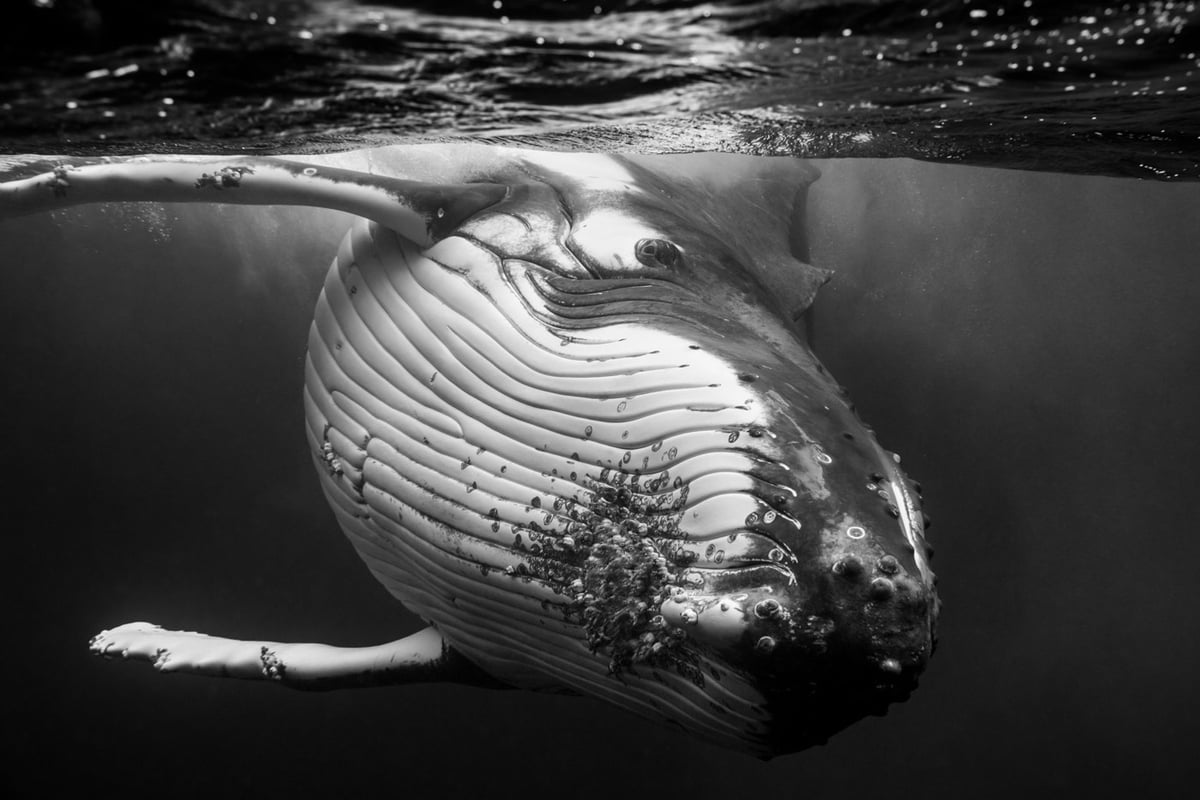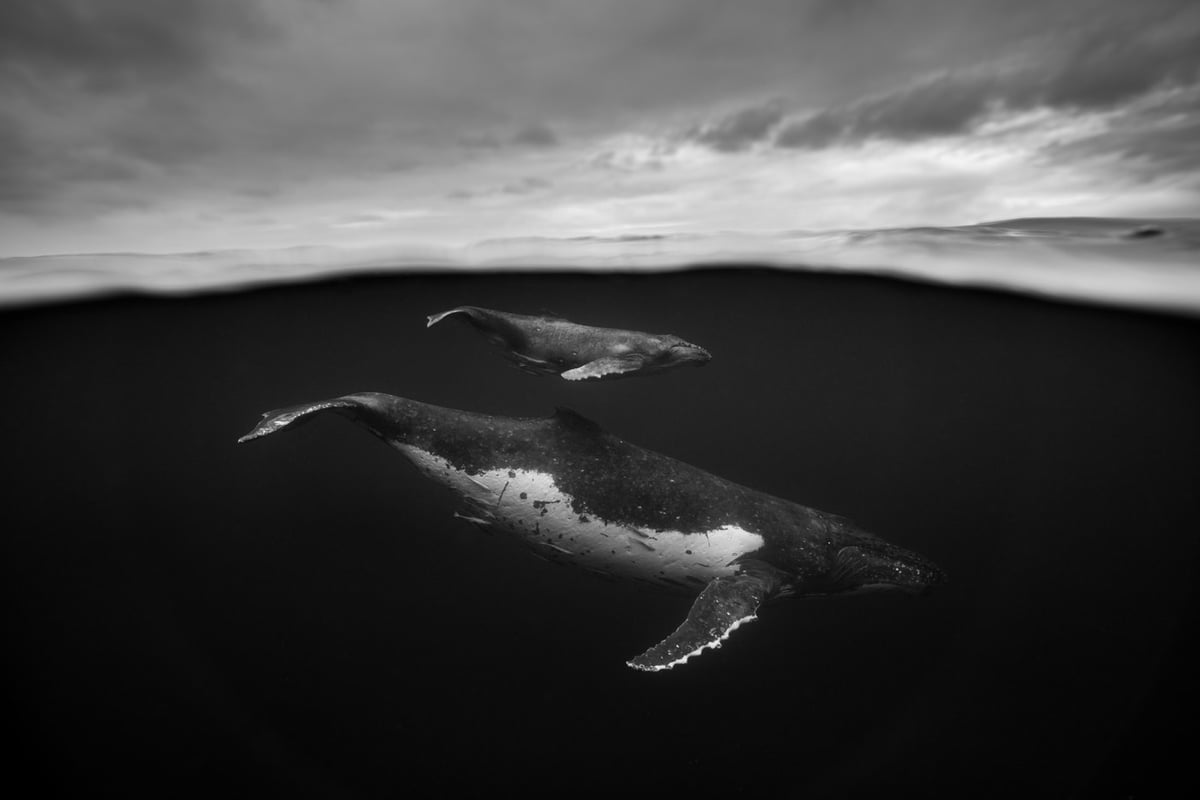Striking B&W photos of humpback whales


Jem Cresswell swam with humpback whales, took over 10,000 black & white photos, and whittled them down into his series, Giants. From Colossal:
In addition to being intrigued by the animals’ size, the Australian-based artist is also fascinated by their brains. In 2006, spindle cells, which were only thought to be present in humans and great apes, were also found to exist within the brains of humpback whales. These cells, which are tied to social organization, empathy, and intuition, were found to be more than three times as prevalent in humpback whales than they were in humans.
Humpbacks aren’t blue whales,1 but that reminded me of a passage I read recently from Robert Sapolsky’s Behave: The Biology of Humans at Our Best and Worst:
Many neurons are also outlandishly large. A zillion red blood cells fit on the proverbial period at the end of this sentence. In contrast, there are single neurons in the spinal cord that send out projection cables many feet long. There are spinal cord neurons in blue whales that are half the length of a basketball court.
Anyway, here’s a behind-the-scenes of Cresswell doing his work.
Beautiful. I may have to add “swimming with humpbacks” to my bucket list.
Duh. As the largest animal ever known to swim the ocean or walk the earth, blue whales are almost twice as big as humpbacks and can live more than twice as long.↩





Stay Connected